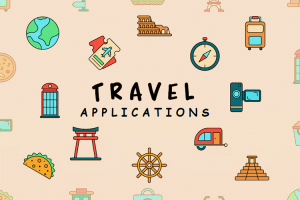Businesses are no longer limited to or confined by geographical boundaries. This means that the ability to communicate across cultures is not just an advantage—it’s a necessity. Whether you’re a startup eyeing global markets or a well-established brand looking to maintain its global presence, mastering the art of cross-cultural communication can set you apart. But how do you bridge the gap between diverse languages, customs, and expectations? The answer lies in using the right business and technology tools.

5 Ways to Enhance Cross-Cultural Communication
Improving cross-cultural communication in business is crucial for effective collaboration and success in today’s globalized world. Here are five game-changing strategies that can help your business improve cross-cultural communication.
1. Cultural Awareness Training Platforms
The foundation of effective cross-cultural communication is understanding and respecting cultural differences. Cultural awareness training platforms offer a comprehensive approach to learning about various cultures, their business etiquettes, negotiation styles, and communication nuances. By integrating these platforms into your training regimen, employees can become more empathetic and effective communicators, capable of navigating the complex landscape of international business with grace. These platforms often use interactive content, real-life scenarios, and quizzes to ensure learning is not only informative but also engaging.
2. International Collaboration Tools
Collaboration across time zones, languages, and cultural barriers is the norm. International collaboration tools are designed to facilitate seamless teamwork, regardless of the physical distance. These platforms provide features such as real-time document editing, project management, and communication channels that support instant messaging and video calls.
By breaking down geographical and linguistic barriers, these tools ensure that teams can work together efficiently. Within this context of business technology, it’s crucial to select tools that are not only powerful but also intuitive, ensuring that all team members, regardless of their tech-savviness, can contribute fully to the team’s objectives.
3. Intercultural Conflict Resolution Services
Differences in cultural backgrounds can sometimes lead to misunderstandings and conflicts, which, if not managed properly, can affect team morale and productivity. This is where intercultural conflict resolution services come in. These services offer mediation and conflict resolution by professionals who specialize in cross-cultural communication.
They work by identifying the root causes of conflict, facilitating open dialogue, and helping parties reach a mutually beneficial resolution. By employing such services, businesses can maintain a harmonious working environment where diversity is seen as a strength rather than a challenge.
4. Translation Technology
Translation technology has evolved to meet the need for effective and fast translation services, offering tools that range from simple text translation to complex document and website localization. The magic of these technologies lies in their ability to break down language barriers, making information accessible to a global audience. Among the most impressive advancements in this field is the development of CAT (Computer-Assisted Translation) tools.
CAT tools translation enhances the efficiency and consistency of translations by leveraging databases of previously translated sentences. This not only speeds up the translation process but also ensures that the context and nuances of the original message are preserved. By integrating CAT tools into their translation workflows, businesses can achieve higher-quality translations in less time, making it easier to communicate with customers and partners around the world.
5. Virtual Reality (VR) Cultural Immersion Experiences
Imagine being able to walk the streets of a foreign city, interact with its people, and learn about its culture without ever leaving your office. Virtual reality (VR) cultural immersion experiences make this possible. These tools offer an immersive learning experience that can significantly enhance cultural understanding and empathy. By simulating real-world environments and cultural interactions, VR can prepare employees for international assignments or improve their communication skills with clients and colleagues from different cultural backgrounds. It’s a cutting-edge way to foster a deep appreciation for and understanding of the diverse world in which we operate.
Final Words
The importance of effective cross-cultural communication cannot be overstated. The tools highlighted above offer powerful solutions for overcoming cultural barriers and building strong, global connections. From understanding and respecting cultural differences through training platforms to leveraging advanced CAT tools for translation, each of these tools enhances communication. VR cultural immersion experiences further bridge the gap, enabling businesses to connect with and understand their global audience on a deeper level.
These tools will remain indispensable in ensuring messages are not just sent, but also received, understood, and valued across cultural lines. Embracing these technologies and services is not just about overcoming language barriers; it’s about weaving the rich tapestry of global cultures into the very fabric of your business strategy. In doing so, businesses can transcend geographical and cultural boundaries, creating a truly global community of customers, partners, and employees.


